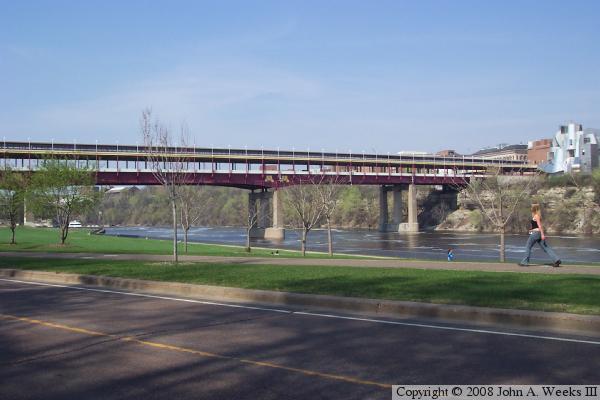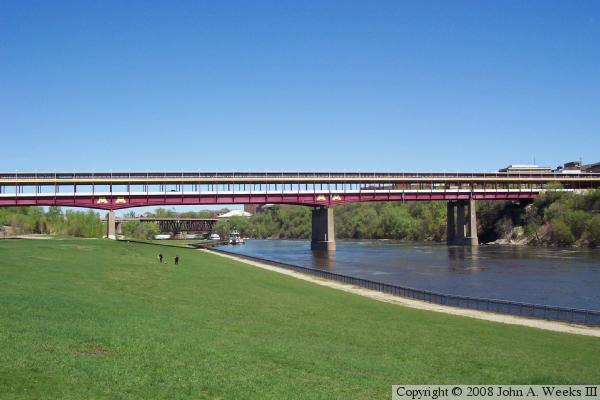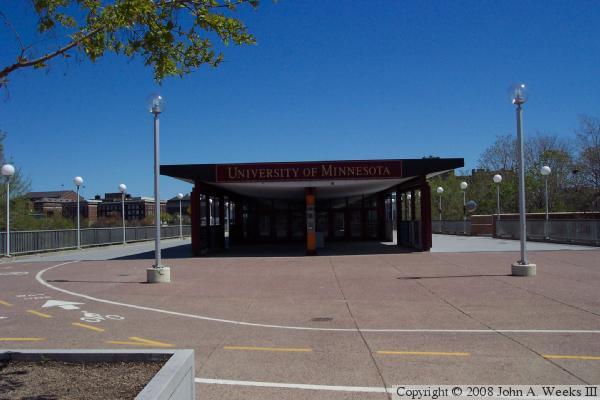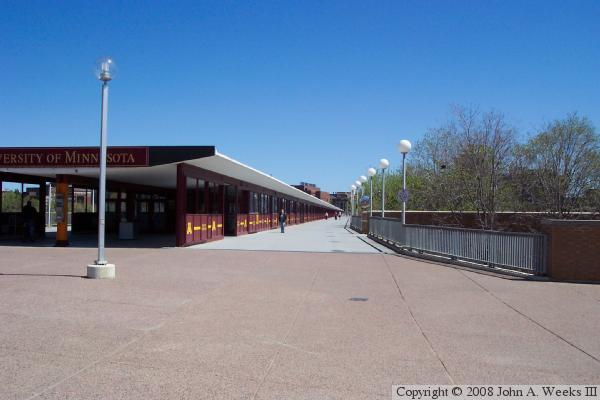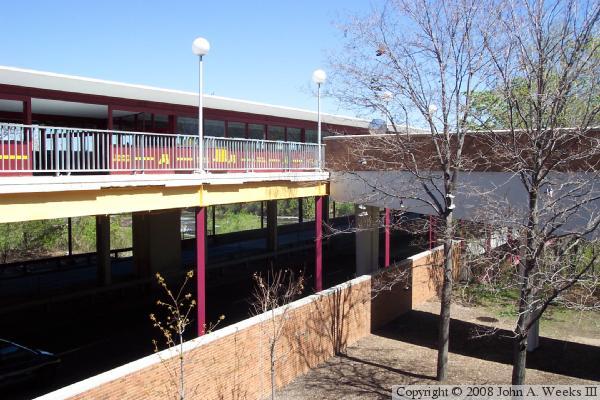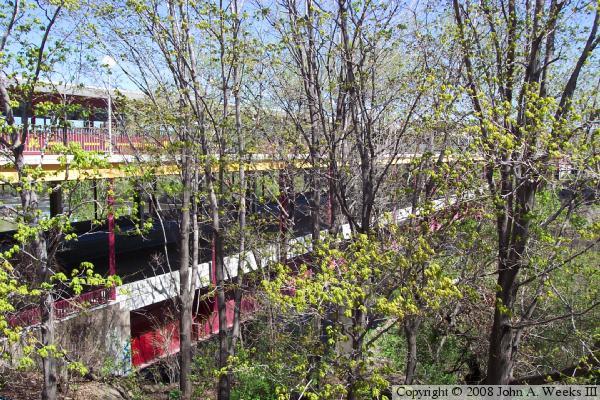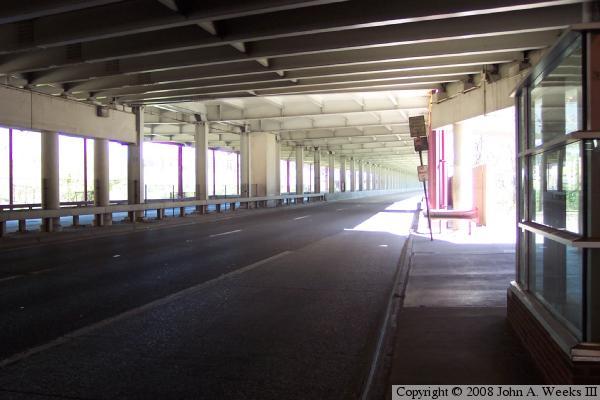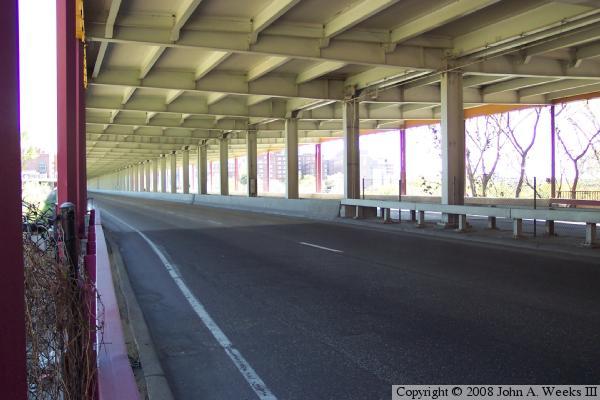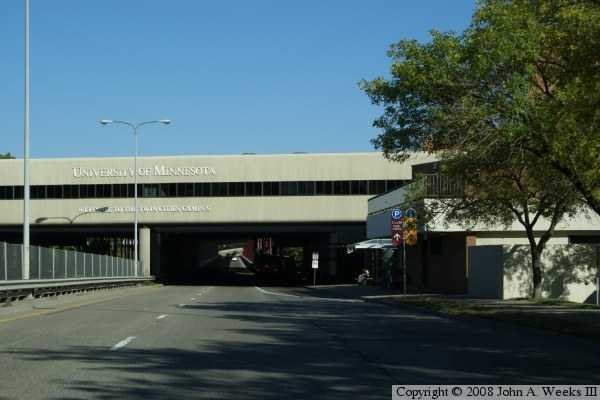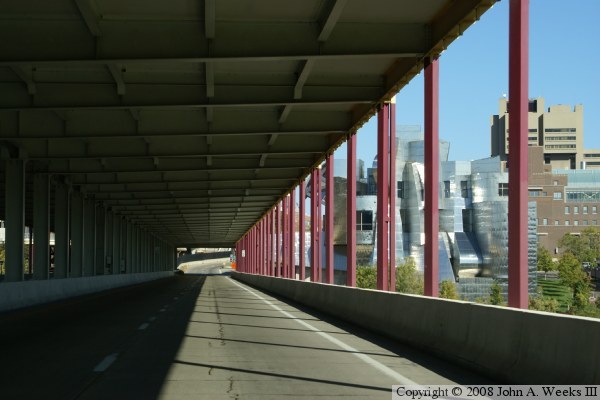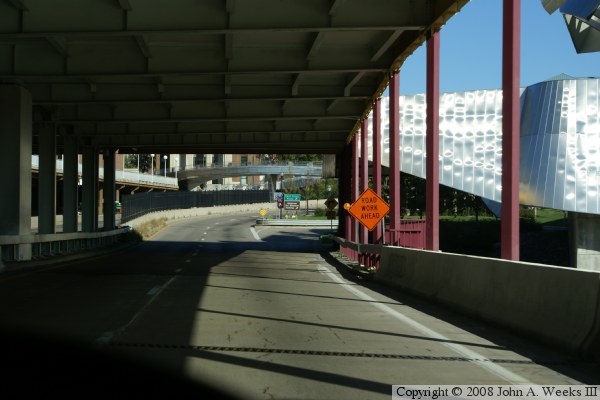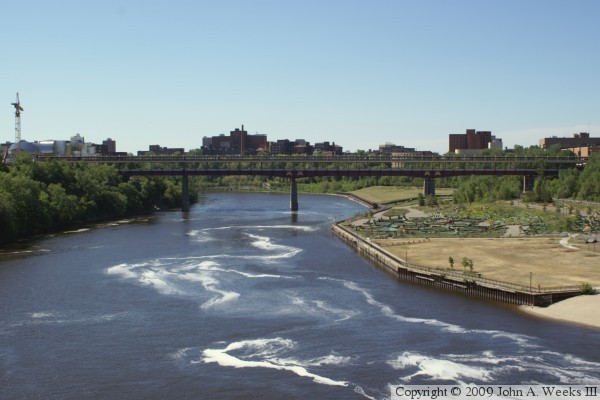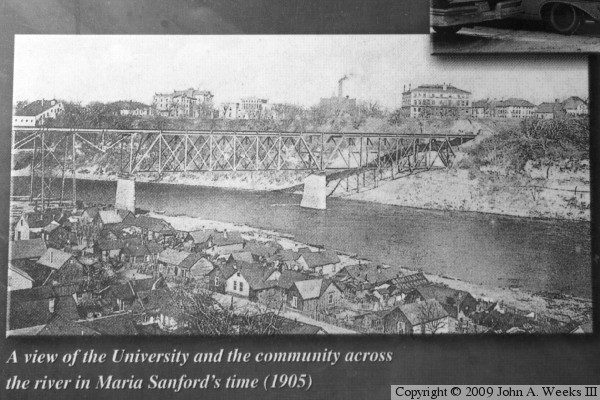The current Washington Avenue bridge was built in 1965. It is a large steel plate girder bridge with a main span of 251 feet. A plate girder bridge is built with large steel beams that are fabricated in a steel shop as opposed to being forged or rolled in a steel mill. This allows engineers to design thicker and thinner spots in the girders to meet the load requirements. A second deck was built on the bridge to be used as a pedestrian walkway for the University of Minnesota, which was just starting to build a large complex on the west side of the Mississippi River.
Harsh winter winds made crossing the bridge quite an ordeal in the middle of the famous Minnesota winters. About 5 years after the bridge opened, the enclosed walkway was built on top of the top deck. The walkway was intended to be heated, but the energy crisis in the early 1970s ended that plan. There are some heaters in the walkway to create some warm spots, but due to drafts, the walkway can drop down below the freezing point. The major function of the walkway is to act as a windbreak, and to keep people dry during rain and snow storms.
The Washington Avenue bridge was painted gray when it was built. The upper deck was painted in the university colors of maroon and gold in the late 1990s. The rest of the structure was painted school colors in the early 2000s. According to the Wikipedia article, that effort was tedious and slow due to the old paint containing lead, which had to be removed, collected, and disposed of. The end result is a colorful signature structure for the university, which happens to sit next to the Frank Gehry designed Weisman Art Museum, another even more stunning signature structure at the University of Minnesota.
This bridge connects the heart of the University of Minnesota East Bank Campus to the freeway system. While the roadway is widely known as Southeast Washington Ave, it also carries the designation of Hennepin County Highway 122, also known as County State Aid Highway 122. The road is a short section of freeway that runs between the Metrodome and the Mississippi River. It has a partial interchange with I-35W and a diamond interchange with Cedar Avenue South. The bridge and highway carried the designation of US-12 until US-12 was moved to I-94, then carried MN-122 until the road was turned back to the county in 1997.
The Washington Avenue bridge was in the news again in 2008. The next phase of the light rail system is planned to run between the two downtown city centers along University Avenue. The light rail will exit downtown Minneapolis through the U of M west bank buildings, cross the river using the Washington Avenue bridge, and continue down the center of Washington Ave to reach University Avenue. A consulting company was hired to determine how to retrofit light rail onto the Washington Ave bridge. As part of that project, the consulting company found that the upper deck supports are not strong enough to meet current standards. The vertical steel supports appear to be just strong enough to support the dead weight of the upper deck, but do not have the margin of safety needed to support the live loads on the bridge. Until the bridge retrofit is completed, both pedestrian and bicycle traffic is confined to a single narrow path down the middle of the upper deck.
On a sad note, the Washington Avenue bridge is also known as the bridge where poet and professor John Berryman committed suicide in 1972.

